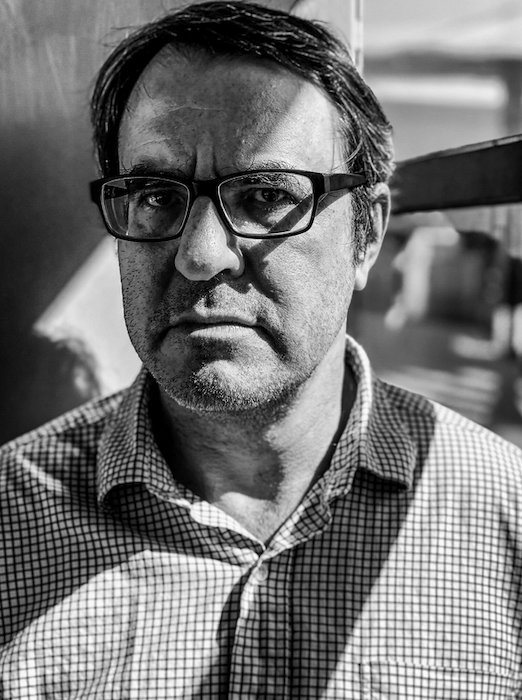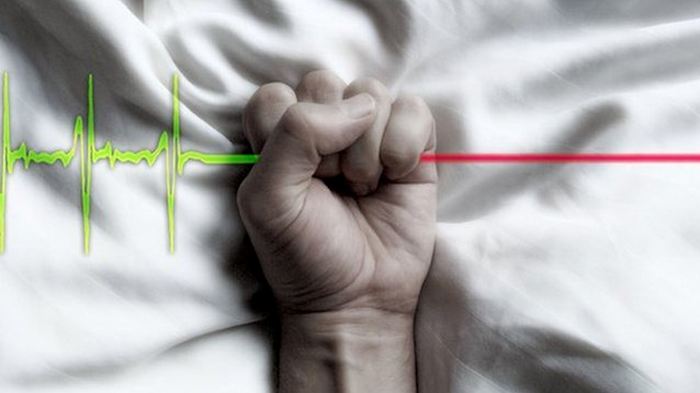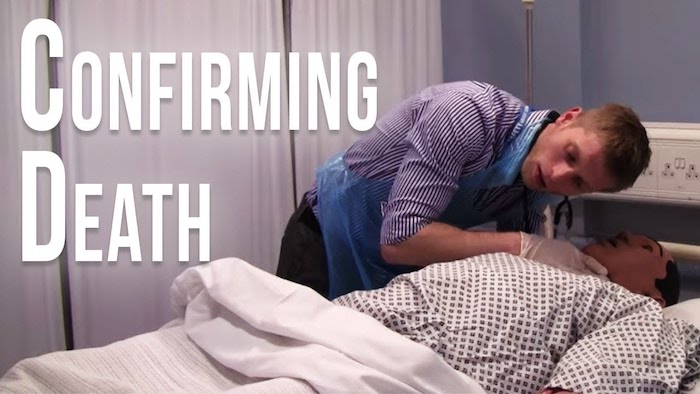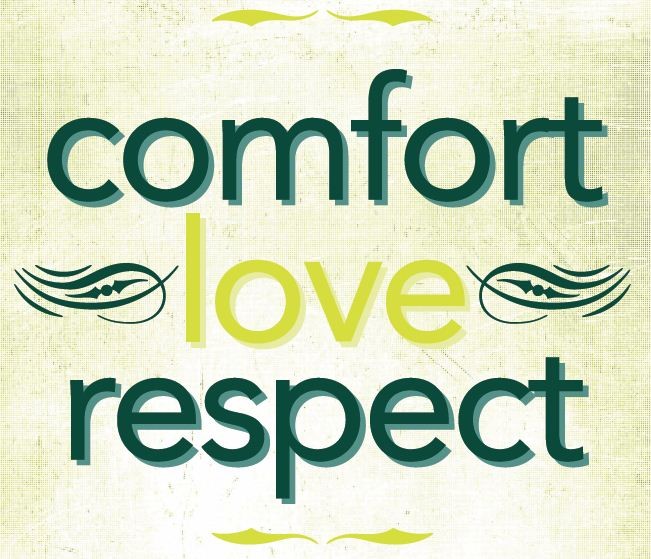A conversation with the religious scholar Brook Ziporyn on Taoism, life and what might come after.

By George Yancy
This is the fifth in a series of interviews with religious scholars exploring how the major faith traditions deal with death. Today, my conversation is with Brook Ziporyn, the Mircea Eliade professor of Chinese religion, philosophy and comparative thought at the University of Chicago Divinity School. Professor Ziporyn has distinguished himself as a scholar and translator of some of the most complex philosophical texts and concepts of the Chinese religious traditions. He is also the author of several books, including “The Penumbra Unbound: The Neo-Taoist Philosophy of Guo Xiang” and “Zhuangzi: The Complete Writings,” as well as two works on Tiantai Buddhism . — George Yancy
George Yancy: For many Westerners, Taoism is somewhat familiar. Some may have had a basic exposure to Taoist thought — perhaps encountering translations of the “Tao Te Ching” or Chinese medicine or martial arts or even just popular references to the concept of yin and yang. But for those who haven’t, can you give us some basics? For example, my understanding is that Taoism can be described as both a religious system and a philosophical system. Is that correct?
Brook Ziporyn: “Taoism” (or “Daosim”) is a blanket term for the philosophy of certain classical texts, mainly from Lao-tzu’s “Tao Te Ching” and the “Zhuangzi” (also known in English as “Chuang-tzu”), but also for a number of religious traditions that adopt some of these texts while also producing many other texts, ideas and practices. This can make it difficult to say what the attitude of Taoism is on any given topic.
What they have in common is the conviction that all definite things, everything we may name and identify and everything we may desire and cherish, including our own bodies and our own lives, emerge from and are rooted in something formless and indefinite: Forms emerge from formlessness, the divided from the undivided, the named from the unnamed, concrete things from vaporous energies, even “beings” from what we’d call “nothing.”
Some forms of religious Taoism seek immortal vitality through a reconnection with this source of life, the inexhaustible energy that gave us birth. Many forms of cultivation, visualization and ritual are developed, with deities both inside and outside one’s own body, to reconnect and integrate with the primal energy in its many forms.
The philosophical Taoism of the “Tao Te Ching” seeks to remain connected to this “mother of the world,” the formless Tao (meaning “Way” or “Course”), that is seemingly the opposite of all we value, but is actually the source of all we value, as manure is to flowers, as the emptiness of a womb is to the fullness of life.
In all these forms of Taoism, there is a stress on “return to the source,” and a contrarian tendency to push in the opposite direction of the usual values and processes, focusing on the reversal and union of apparent opposites. In the “Zhuangzi,” even the definiteness of “source” is too fixed to fully accommodate the scope of universal reversal and transformation; we have instead a celebration of openness to the raucous universal process of change, the transformation of all things into each other.
Yancy: In Taoism, there is the concept of “wu-wei” (“doing nothing”). How does this concept relate to what we, as human beings, should strive for, and how is that term related to an ethical life?
Ziporyn: Wei means “doing” or “making,” but also “for a conscious, deliberate purpose.” Wu-wei thus means non-doing, implying effortlessness, non-striving, non-artificiality, non-coercion, but most centrally eschewal of conscious purpose as controller of our actions.
So in a way the idea of wu-wei implies a global reconsideration of the very premise of your question — the status and desirability of striving as such, or having any definite conscious ideals guide our lives, any definite conscious ethical guide. Wu-wei is what happens without being made to happen by a definite intention, without a plan, without an ulterior motive — the way one does the things one doesn’t have to try to do, what one is doing without noticing it, without conscious motive. Our heart beats, but we do not “do” the beating of our hearts — it just happens. Taoism says “wu-wei er wu bu-wei” — by non-doing, nothing is left undone.
Theistic traditions might suggest that what is not deliberately made or done by us is done by someone else — God — and done by design, for a purpose. Even post-theistic naturalists might still speak of the functions of things in terms of their “purpose” (“the heart pumps in order to circulate the blood and keep the body alive”). But for Taoists, only what is done by a mind with a prior intention can have a purpose, and nature isn’t like that. It does it all without anyone knowing how or why it’s done, and that’s why it works so well.
Yancy: How does Taoism conceive of the soul?
Ziporyn: Taoism has no concept of “the” soul per se; the person has many souls, or many centers of energy, which must be integrated. All are concretizations of a more primal formless continuum of energy of which they are a part, like lumps in pancake batter. These are neither perfectly discontinuous nor perfectly dissolved into oneness.
Ancient Chinese belief regarded the living person as having two souls, the “hun” and the “po,” which parted ways at death. Later religious Taoists conceived of multitudes of gods, many of whom inhabit our own bodies — multiple mini-souls within us and without us, which the practitioner endeavored to connect with and harmonize into an integral whole.
Yancy: The concept of a soul is typically integral to a conceptualization of death. How does Taoism conceive of death?
Ziporyn: In the “Zhuangzi,” there is a story about death, and a special friendship formed by humans in the face of it. Four fellows declare to each other, “Who can see nothingness as his own head, life as his own spine, and death as his own backside? Who knows the single body formed by life and death, existence and nonexistence? I will be his friend!” We go from formlessness to form — this living human body — then again to formlessness. But all three phases constitute a single entity, ever transforming from one part to another, death to life to death. Our existence when alive is only one part of it, the middle bit; the nothingness or formlessness before and after our lives are part of the same indivisible whole. Attunement to this becomes here a basis for a peculiar intimacy and fellowship among humans while they are alive, since their seemingly definite forms are joined in this continuum of formlessness.
The next story in the “Zhuangzi” gives an even deeper description of this oneness and this intimacy. Three friends declare, “‘Who can be together in their very not being together, doing something for one another by doing nothing for one another? Who can climb up upon the heavens, roaming on the mists, twisting and turning round and round without limit, living their lives in mutual forgetfulness, never coming to an end?’ The three of them looked at each other and burst out laughing, feeling complete concord, and thus did they become friends.”
Here there is no more mention of the “one body” shared by all — even the idea of a fixed oneness is gone. We have only limitless transformation. And the intimacy is now an wu-wei kind of intimacy, with no conscious awareness of a goal or object: They commune with each other by forgetting each other, just as they commune with the one indivisible body of transformation by forgetting all about it, and just transforming onward endlessly. Death itself is transformation, but life is also transformation, and the change from life to death and death to life is transformation too.
Yancy: Most of us fear death. The idea of the possible finality of death is frightening. How do we, according to Taoism, best address that fear?
Ziporyn: In that story about the four fellows, one of them suddenly falls ill and faces imminent death. He muses contentedly that after he dies he will continue to be transformed by whatever creates things, even as his body and mind break apart: His left arm perhaps into a rooster, his right arm perhaps into a crossbow pellet, his buttocks into a pair of wheels, his spirit into a horse. How marvelous that will be, he muses, announcing the dawn as a rooster, hunting down game as a pellet, riding along as a horse and carriage. Another friend then falls ill, and his pal praises the greatness of the process of transformation, wondering what he’ll be made into next — a mouse’s liver? A bug’s arm? The dying man says anywhere it sends him would be all right. He compares it to a great smelter. To be a human being for a while is like being metal that has been forged into a famous sword. To insist on only ever being a human in this great furnace of transformation is to be bad metal — good metal is the kind that can be malleable, broken apart and recombined with other things, shaped into anything.
I think the best summary of this attitude to death and life, and the joy in both, is from the same chapter in “Zhuangzi”:
This human form is just something we have stumbled into, but those who have become humans take delight in it nonetheless. Now the human form during its time undergoes ten thousand transformations, never stopping for an instant — so the joys it brings must be beyond calculation! Hence the sage uses it to roam and play in that from which nothing ever escapes, where all things are maintained. Early death, old age, the beginning, the end — this allows him to see each of them as good.
Every change brings its own form of joy, if, through wu-wei, we can free ourselves of the prejudices of our prior values and goals, and let every situation deliver to us its own new form as a new good. Zhuangzi calls it “hiding the world in the world”— roaming and playing and transforming in that from which nothing ever escapes.
Yancy: So, through wu-wei, on my death bed, I should celebrate as death isn’t an ending, but another beginning, another becoming? I also assume that there is no carry over of memory. In other words, in this life, I am a philosopher, male, etc. As I continue to become — a turtle, a part of Proxima Centauri, a tree branch — will I remember having been a philosopher, male?
Ziporyn: I think your assumption is correct about that: There is no expectation of memory, at least for these more radical Taoists like Zhuangzi. This is certainly connected with the general association of wu-wei with a sort of non-knowing. In fact in the climax of the same chapter as we find the death stories just mentioned, we find the virtue of “forgetting” extolled as the highest stage of Taoist cultivation — “a dropping away of my limbs and torso, a chasing off my sensory acuity, dispersing my physical form and ousting my understanding until I am the same as the Transforming Openness. This is what I call just sitting and forgetting.”
And the final death story there describes a certain Mr. Mengsun as having reached the perfect attitude toward life and death. He understands nothing about why he lives or dies. His existence consists only of waiting for the next unknown transformation. “[H]is physical form may meet with shocks but this causes no loss to his mind; what he experiences are morning wakings to ever new homes rather than the death of any previous realities.”
The freshness of the new transformation into ever new forms, and the ability to wholeheartedly embrace the new values that go with them, seems to require an ability to let go of the old completely. I think most of us will agree that such thorough forgetting is a pretty tall order! It seems that it may, ironically enough, require a lifetime of practice.
Yancy: Given the overwhelming political and existential global importance of race at this moment, do you have any reflections on your role as a white scholar of Taoism? In other words, are there racial or cultural issues that are salient for you as a non-Asian scholar of Eastern religious thought?
Brook Ziporyn: A very complex question, probably requiring a whole other interview! But my feeling is that, when dealing with ancient texts written in dead languages, the issue is more linguistic and cultural than racial. This goes for ancient Greek, Hebrew, Sanskrit and Latin texts as well as for ancient Chinese texts, all of which bear a complex historical relation to particular living communities and their languages, but all of which are also susceptible to fiercely contested interpretations both inside and outside those communities.
I think it’s a good thing for both Asian and non-Asian scholars to struggle to attain literacy in the textual inheritances of both the Asian and the non-Asian ancient worlds, which is “another country” to all of us, and to advance as many alternate coherent interpretations of them as possible. These interpretations will in all cases be very much conditioned by our particular current cultural situations, and these differences will certainly be reflected in the results — which is a good thing, I think, as long as we remain aware of it.
Writing about Taoism in English, one is speaking from and to an English-reading world. Doing so in modern Chinese, one is speaking from and to a modern-Chinese-reading world. Working crosswise in either language, as when a culturally native Anglophone like myself writes about Taoism in modern Chinese, or when a native Mandarin speaker writes in English about Taoism, or for that matter in either English or Chinese about ancient Greek philosophy or the Hebrew Bible, the situation will again differ, and the resulting discussion will reflect this as well.
In terms of the dangers of Orientalism, though, what I think must be especially guarded against is making any claim that whatever anyone may conclude about any particular ancient Chinese text can give any special insight into the politics, culture, or behavior of modern Chinese persons, communities or polities. The historical relations between modern and ancient cultural forms are simply too complex to think that the former can give one any right to claim any knowledge about the latter.
Complete Article ↪HERE↩!






